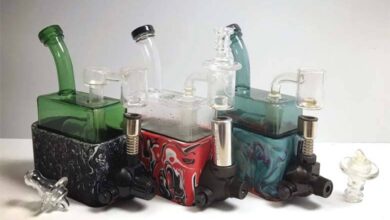
Moisture-Wicking Properties
The fabric you wear during workouts can greatly impact your exercise performance and comfort. For example, if the material you’re wearing is breathable and moisture-wicking, it will help evaporate sweat more quickly and reduce odor-causing bacteria. The right fabric can also make your clothes more comfortable and help you push harder in your workouts.
One of the most popular thin athletic materials for activewear is polyester, commonly used in sports bras, shorts and leggings. It’s lightweight and breathable, keeping you cool and dry during workouts. It’s also durable and wrinkle-resistant, so that it won’t rip or stretch easily.
Another popular thin athletic material choice is nylon, often used to make form-fitting clothing. This type of fabric is ideal for outdoor workouts because it’s water-resistant and can handle high temperatures. It’s also elastic, so it can move as you work out and won’t restrict your movement.
You can even find moisture-wicking fabrics from natural materials like merino wool and bamboo. These natural fibers have dynamic moisture management properties important for active sportswear, especially for women’s sports bras. They can improve the comfort of the garments and help prevent bacterial growth, which is important for residual limb users who may need to wear braces during workouts.
Stretchability
Athletes and fitness enthusiasts need clothing supporting their full range of motion during workouts. Clothing that is too tight or restrictive limits mobility and can limit sweat-wicking abilities. Form-fitting garments also reduce muscle fatigue and can help athletes recover faster.
Stretch fabric is made by incorporating a small percentage of elastomeric fibers into woven textile fabrics or through yarn selection. A fabric can also be designed to have a high degree of stretch without elastomeric fibers through fabric construction or yarn selection. The amount of time required depends on the end use of the fabric, with comfort stretch fabrics suited for low loads and power stretch fabrics suited for higher load applications.
To create activewear and athleisure collections that meet consumer expectations, brands and retailers can choose fabrics incorporating spandex technology. Spandex technology uses the PCE(tm) Index to test and certify fabric performance so designers can streamline fabric selection, prototyping, and testing, saving time and money. This platform can also communicate the performance benefits of form-fitting fabrics and enhance product sales.
Durability
Depending on your activity level and workouts, consider buying athletic material that is both durable and wrinkle-resistant. This type of fabric is ideal for high-intensity training sessions or when you’re exercising outdoors in various weather conditions like sleet, snow, rain and extreme heat.
Form-fitting fabrics are also a must for fitness enthusiasts because they allow you to move your body without restrictions or discomfort easily. Whether doing a yoga class, going on a bike ride or running to the gym, form-fitting clothing can help your muscles not swell as much and boost blood flow, helping with muscle recovery and endurance.
MIT scientists have just created intelligent textiles that are pleasant and form-fitting. This intelligent fabric can detect user movement. It can detect movements the wearer makes, such as walking, running, and leaping.
They melted a specific variety of plastic yarn. Thermoforming is the name of this procedure. By doing this, researchers might greatly increase the accuracy of pressure sensors woven into what they refer to as 3DKnITS, multilayered knit textiles.
They produced a smart shoe and mat using this method. Later, they measured and processed data from the pressure sensors in real-time using newly created hardware and software systems. The machine-learning algorithm predicted the movements and yoga poses a person would perform while standing on the smart mat with an accuracy rate of about 95%.
Spandex is a popular choice for tight-fitting clothes, a thin synthetic fabric for sports bras, leggings and track shorts. It’s woven with innumerable polymer strands to create an elastic fiber known as elastane. The process manufacturers use to produce elastane involves mixing monomers such as glycol and diisocyanate with solvents. This process has a prepolymer, diluting and pumping into spinning machines to create the final product.
Comfort
Many athletes and fitness enthusiasts find that form-fitting clothing makes a huge difference in improving their workout performance. This is because the tight fabric helps prevent muscles from swelling and increases blood pressure, both of which help speed up muscle rebuilding and recovery.
Elastane is a popular thin athletic material used in skin-tight exercise clothes such as leggings and track shorts. It can be stretched up to 700 percent without wearing out and always returns to its original shape. It’s also the material often used in motion capture suits, unique bodysuits that actors wear in front of green screens to create realistic 3D characters for movies and TV shows.
Another popular thin athletic material is polyester, which is both durable and comfortable. It’s typically used in workout clothing worn in various weather, including sleet and snow.




